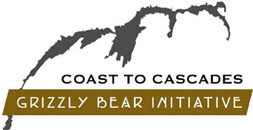One of the most magical events in the animal kingdom is occurring over the next couple weeks in British Columbia’s mountain wilderness. Under the deep snows of the Coast to Cascades and other regions, our largest terrestrial carnivores, the grizzly bears are giving birth to helpless, hairless, one-pound cubs.
Despite not having eaten in 8 to 10 weeks since she entered her winter den around mid-November, the mothers of the next grizzly generation are superbly evolved to bring her young into the world in a way and time that gives them the best chance of being parents themselves.
Although she mates in spring, the blastocysts don’t implant into the mother’s uterus until she enters her winter den. After a summer and fall of gorging on huckleberries, salmon and the rest of the seasonal grizzly bear banquet, she is endowed with enough fat to produce the rich milk that gives her little ones a solid start in life. While we are pouring 2% milk on our corn flakes, a mama grizzly bear supplies her cubs with a calorie packing 30% milk fat.
Soon after birth, the tiny squirrel-sized cubs begin suckling. Grizzly bears usually dig dens in higher elevation slopes that will get heavy snow loads.
The delayed implant strategy allows her to consume the 20,000 daily calories in fall that she’ll need to pile on enough fat for winter without those calories being diverted to in-utero young. For the cubs, being born in the den and emerging 12-14 weeks later also gives her cubs time to grow robust enough to trail their moms as she goes about the urgent task of finding spring foods scattered over her large home range.
A mother bear grizzly bear emerging with her cubs in spring faces big challenges, especially in the Coast to Cascades region. It is the season when grizzly bears are at their most vulnerable. In our next post, you can learn all about those challenges and what our Initiative is doing to lessen their impacts on grizzly bear families.
--
Stay informed on grizzly bears in southwest British Columbia. Sign up for our mailing list on the right hand side of this page, or follow us on Twitter and Facebook.

